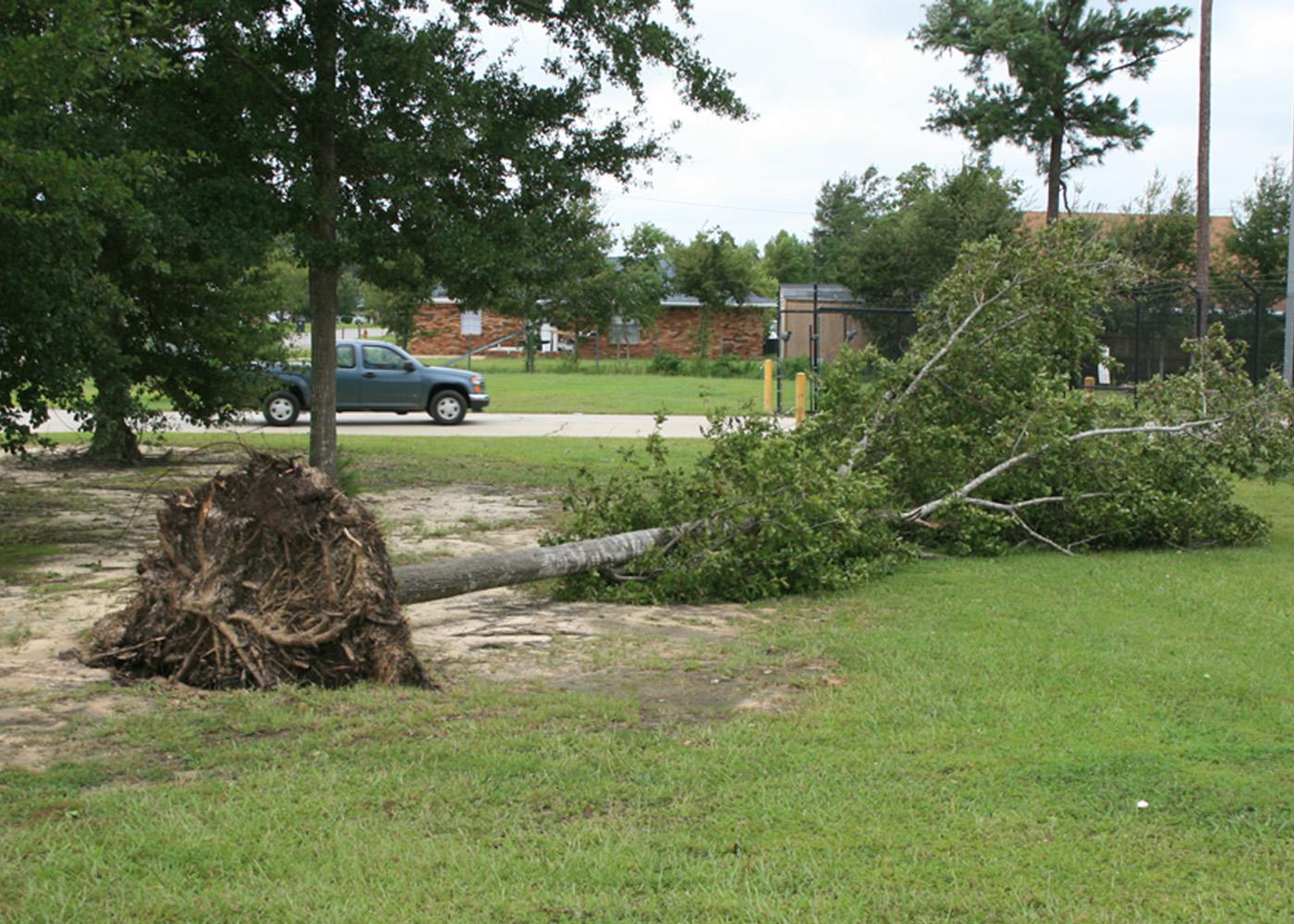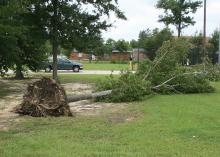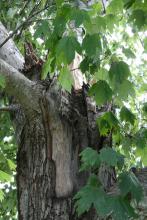Information Possibly Outdated
The information presented on this page was originally released on August 5, 2010. It may not be outdated, but please search our site for more current information. If you plan to quote or reference this information in a publication, please check with the Extension specialist or author before proceeding.
Help trees recover from storm damage
As we enter the most active part of hurricane season, now is a good time to think about ways to help landscape trees recover from storm damage.
A common myth is that the root system mirrors the top growth of a tree. While some trees do put down deep roots, most of a tree’s root system is in the top 12 to 14 inches of soil. Roots need to be near the surface to exchange carbon dioxide and oxygen gases and to ensure healthy root and tree growth. These roots also help stabilize the tree. You can see their presence and arrangement in trees that have been blown over.
Many people don’t believe that trees can heal themselves after storm damage. Trees do not heal in the same sense as we do after an injury. The tree responds to the injury through a process called compartmentalization, strengthening it and sealing off the damaged area from the rest of the tree.
Never paint, caulk, cement or use any other material to cover a tree wound as these will trap disease organisms. Always trim damaged, jagged branches to an even surface. This allows the tree to form callus tissue around the damaged edges and eventually seal the damaged area off from the rest of the tree.
Many damaged branches must be removed. Never prune a branch flush with the trunk, as this provides an opening for pathogens to enter the tree. Look for the branch collar, a slightly raised area around the point where the branch attaches to the trunk, and prune there to allow the tree to heal itself.
Many homeowners in coastal counties have lost some landscape trees to tropical storms. When replacing trees, consider the tree’s growth characteristics and mature size.
One common mistake homeowners make is planting a large, fast-growing tree under power lines or too near their home, believing that pruning will keep the growth under control. In most cases, these trees get away from the homeowner and end up causing problems with the home foundation, with the power company or in another storm.
When selecting trees to plant under power lines, choose small, ornamental trees that will reach 15 feet tall or less. If you have to prune a tree to keep it under control, you have planted the wrong tree.
There is a rule to follow when planting near the home. Always plant your tree 1 ½ times the mature canopy radius away from the home. (The radius is the tree’s diameter divided by two.) This way you will always have a buffer away from your home.
For more information on repairing trees damaged in storms, refer to MSU Extension Information Sheet 1355 Repairing Storm-damaged Shade, Ornamental, and Fruit Trees. This publication isalso available from your local county Extension office.












